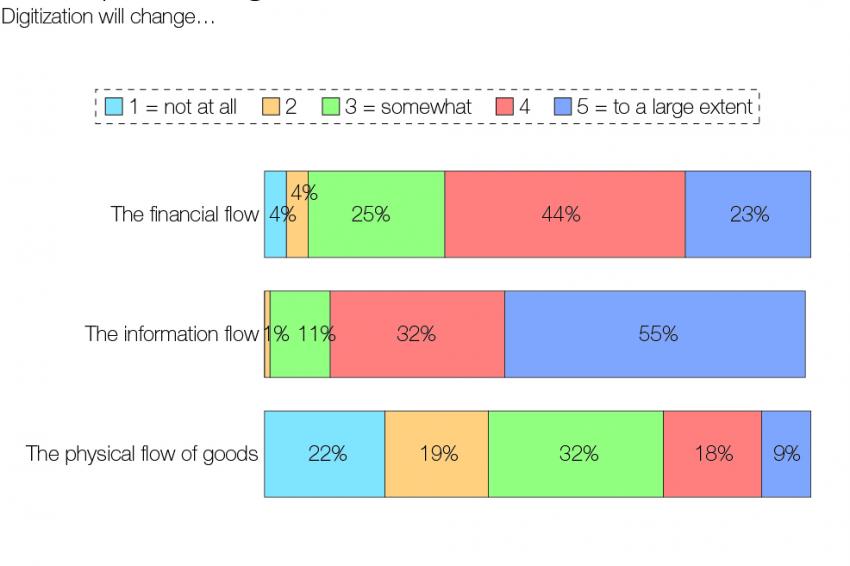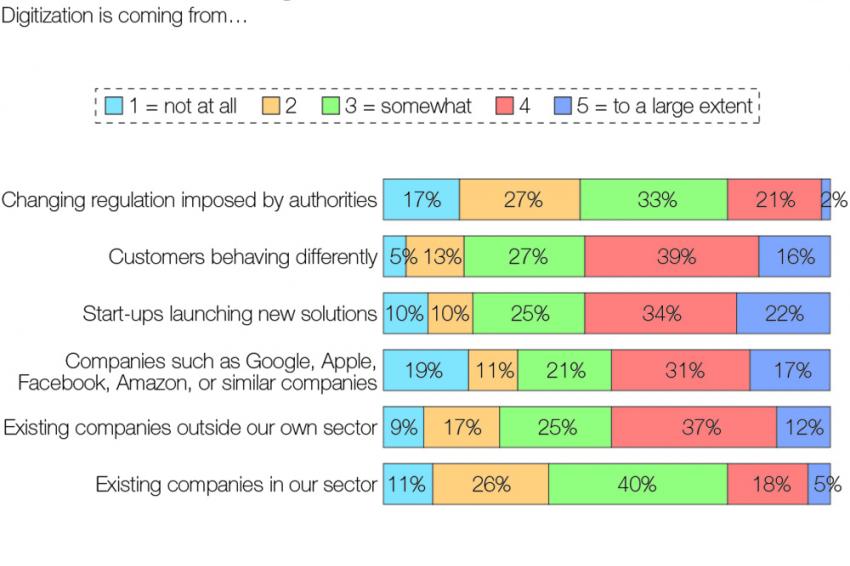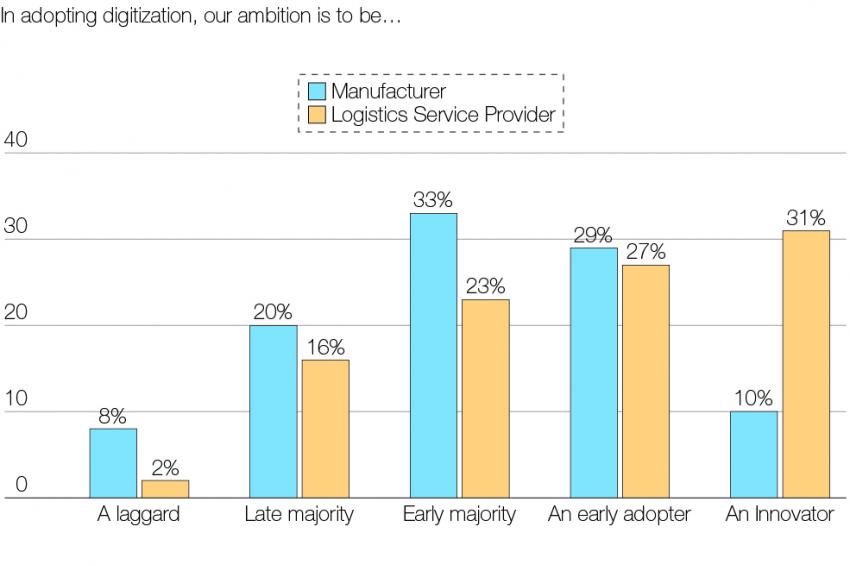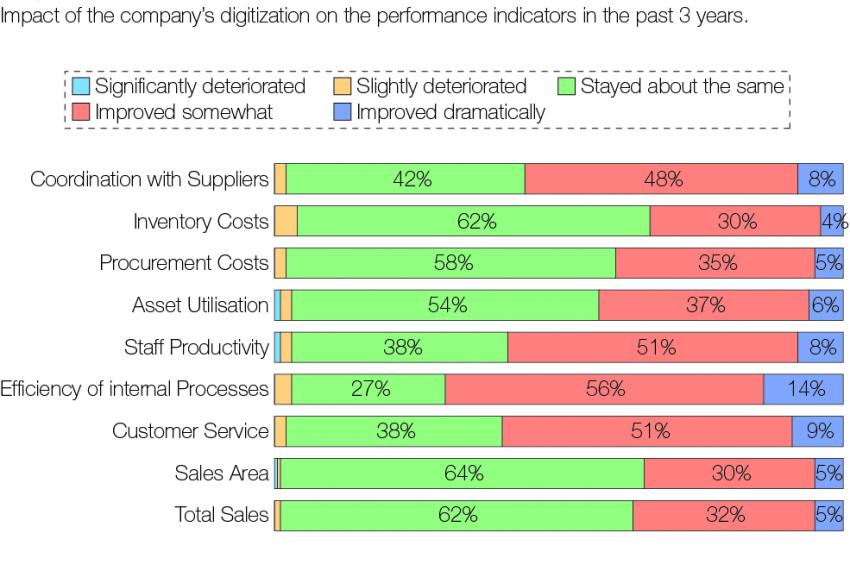Digitization in the Petrochemical Supply Chain
Can the Petchem Industry Become an Early Adopter of Digitization or even an Innovator?
Back in 2006, Clive Humby at Tesco said the almost prophetic words “data is the new oil.” Time proved him right. Now, 12 years later, the top 5 companies in the world in terms of market capitalization are data-intensive enterprises. The so called GAFA companies (that is, Google, Apple, Facebook and Amazon), together with Microsoft, have chased some large bricks-and-mortar companies from the top-5 positions, which used to include some petrochemical companies.
We experience every day how data and digital applications change the way we communicate, the way we live, and the way we do business. It has changed entire sectors, such as telecommunications, retail, and media and entertainment. And it gradually finds its way into other sectors, including the petrochemical industry.
Digitization: Threat or Opportunity?
Digital technologies have a huge impact on the structure of supply chains. Factories are becoming smart by introducing new process technologies, often referred to as Industry 4.0 or Internet of Things (IoT). E-commerce is changing distribution channels. Automation and augmented reality are changing the processes in warehouses and transportation. Logistics service providers are investing in end-to-end visibility across the chain. Start-up companies are disrupting traditional logistics flows. The examples of digitization in the supply chain are numerous. They may be considered as a threat for some, yet as an opportunity for other companies.
These developments provided the entry point and backdrop for a supply chain & logistics research study, commissioned by the European Petrochemical Association (EPCA) and conducted over the course of 2017 by a team at Vlerick Business School. Nearly 240 managers and experts in the petrochemical supply chain participated. The results of the research study are discussed in the recently published report “Digitisation in the Petrochemical Supply Chain”.
A special focus was put on the following questions: How digital is the petrochemical supply chain? What does digitization mean for the petrochemical supply chain? And how can digitization create value in the supply chain of the petrochemical sector, from the upstream refineries, to the downstream traders, distributors and customers of the chemical companies?
The Impact of Digitization
As in many other sectors, digitization is taking place at a fast pace in the petrochemical sector. Proven and new technologies are introduced on the shop floor, in the warehouse, in transportation and in many other logistic activities. They change the way companies run their factories and their supply chain.
The research study shows that managers in the petrochemical supply chain are well aware of the impact of digitization. They almost unanimously report that digitization will have a significant impact on their internal processes and their supply chain. In particular, they expect that it will have an important impact on the information flow (ordering, planning and control) and the financial flow (accounting, invoicing, payment), less so on the physical flow of products (cf. figure 1).
Half of the participants in the research report that it will even change the way they do business. New business models will arise, in manufacturing as well as logistics. Not only is there awareness of the importance and impact of digitization, there is also a sense of urgency. Three out of four survey participants acknowledge that the petrochemical sector is lagging behind other sectors. Thus, digital technology awareness and the appetite to transform is high within the EPCA membership even though overall, the petrochemical industry is perceived as lagging behind other sectors.
Customers Drive Digitization
Interestingly, customers are even more stern; they almost unanimously report that the sector is lagging. The customers are actually an important driver of digitization (cf. figure 2). They are asking for transparency in the supply chain, for new solutions and for even better service; digital technologies and applications can bring the innovation the market expects.
The pressure to digitize is mainly coming from the market and from outside the petrochemical industry. And, the closer to the customer, the higher is the ambition for and the achievement of digitization. The customers seem to “push” digitization into the supply chain, all the way from the consumer to the refinery.
Pressure is also coming from newcomers in the sector: start-up companies launching new solutions, the so-called “GAFA” companies, or existing companies from other sectors entering the petrochemical sector.
The sector may be lagging… yet, there is a lot of ambition. About half of the participants aim to be an early adopter of digitization or even an innovator (cf. figure 3). However, there is still a long way to go.
A Set of Capabilities Required
About half of the participants admit being still in the starting mode. So, the overall picture the study draws is one of a sector that is well aware of the importance and potential impact of digitization that got off the starting blocks and is running.
The EPCA report provides some illustrations of innovative digital projects in the petrochemical supply chain through eleven cases from manufacturers and logistics service providers. They show the implementation of a wide range of technologies and systems, offering more transparency, creating platforms for intensive collaboration, and improving supply chain performance.
Running the race requires a set of capabilities. There is a need for investment in developing these capabilities. The “number one priority” should go to attracting and developing digital talent, although it is fair to say that effort is also needed on all other aspects – digital strategy, governance, processes, culture and technology – of capabilities for digital transformation.
Investments in Proven Technologies
Investments are planned mainly in proven technologies. Big data and advanced analytics, cloud computing, digital identifiers and low-cost sensor technologies will find their way into the petrochemical supply chain soon, if not now already. There is a bit more hesitation in the petrochemical industry on the technologies with medium to longer-term impact: “Maybe” is the typical answer participants gave when asked about plans for investment in the next 3 years on IoT, control tower solutions, robotics and automation, social media and self-learning systems. There is little enthusiasm for investments in augmented reality, blockchain and self-driving vehicles, which is in line with the low impact that is expected from these technologies. Finally, the overall interest in 3D-printing, unmanned aerial vehicles and bionic enhancement is low in the petrochemical supply chain. If and when investments in these technologies will be seen, it will most likely be in niche applications in the supply chain.
Digitization Does Pay Off
Investments in technologies bring along some challenges that need to be managed. Firstly, the risk of “de-humanizing” the supply chain needs attention. Secondly, the more we use information and communication technologies in the supply chain, the more we rely on these systems for our day-to-day operations, and the more we must manage the risk of hacking, system failures and temporary black-outs. That said, digitization does pay off. The majority of the participants in the EPCA study report an increase in efficiency and productivity, as well as an improvement of customer service.
Logistics Service Providers Act as Catalysts
Especially for logistics service providers this also results in increased sales. Improved collaboration with suppliers is an often-mentioned benefit. However, the increased visibility of assets and goods throughout the supply chain and the improved coordination and alignment across the chain has not (yet) led to lower inventory levels and improved asset utilization for many of the participating companies (cf. figure 4). Could it be a matter of time before these longer-term benefits materialize?
The study clearly shows a higher level of maturity among the logistics service providers than among the petrochemical manufacturers. Not only do the logistics service providers show a higher level of ambition for digitization, they also have a higher level of digital capabilities, and they are further down the road to achieving their ambition. Since many of these logistics service providers are active in different sectors, they gain experience with more advanced practices that they can transfer to the petrochemical supply chain. As such, they act as the catalyst of digital innovations in the petrochemical supply chain.











